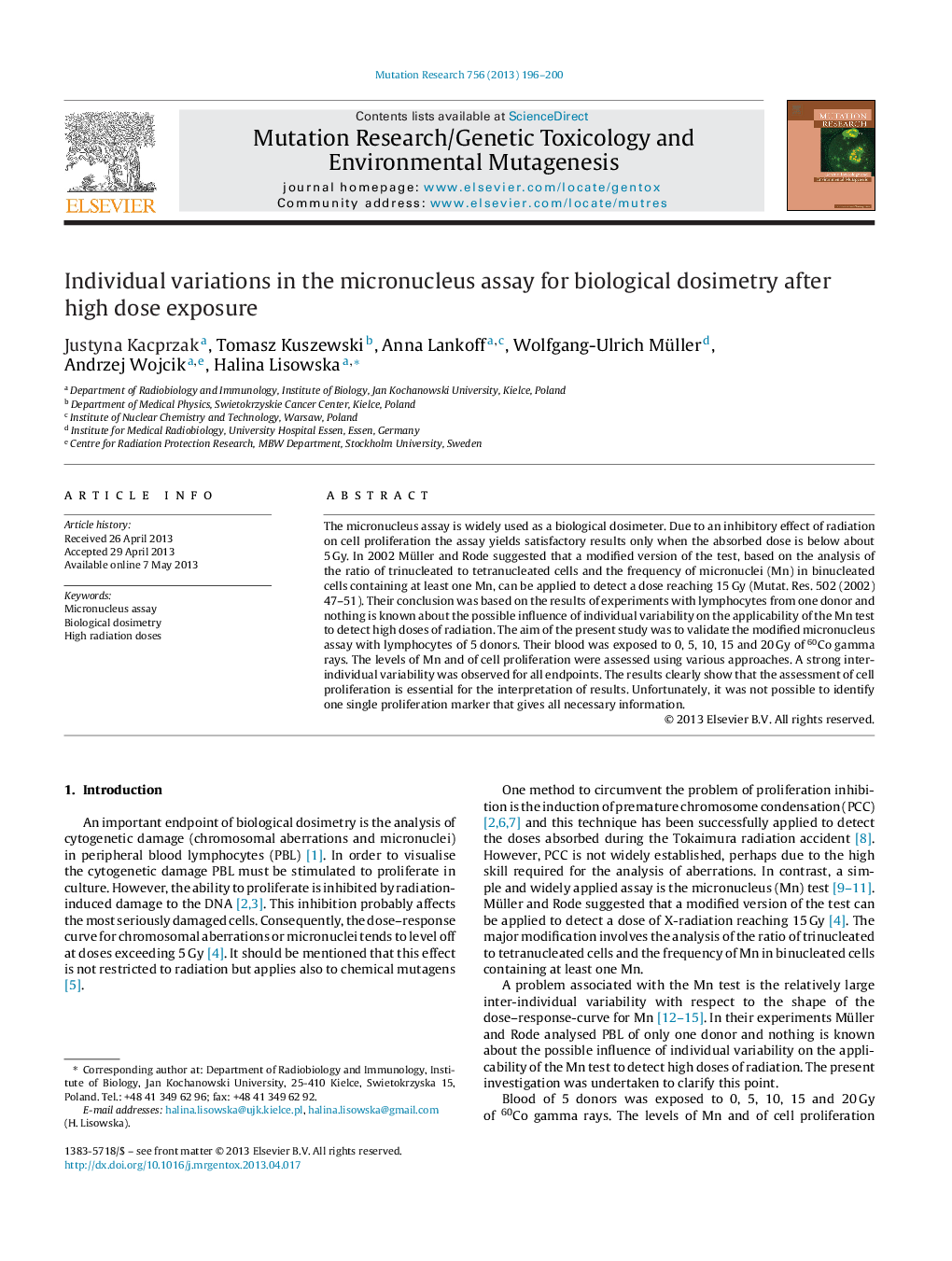| Article ID | Journal | Published Year | Pages | File Type |
|---|---|---|---|---|
| 8456522 | Mutation Research/Genetic Toxicology and Environmental Mutagenesis | 2013 | 5 Pages |
Abstract
The micronucleus assay is widely used as a biological dosimeter. Due to an inhibitory effect of radiation on cell proliferation the assay yields satisfactory results only when the absorbed dose is below about 5Â Gy. In 2002 Müller and Rode suggested that a modified version of the test, based on the analysis of the ratio of trinucleated to tetranucleated cells and the frequency of micronuclei (Mn) in binucleated cells containing at least one Mn, can be applied to detect a dose reaching 15Â Gy (Mutat. Res. 502 (2002) 47-51). Their conclusion was based on the results of experiments with lymphocytes from one donor and nothing is known about the possible influence of individual variability on the applicability of the Mn test to detect high doses of radiation. The aim of the present study was to validate the modified micronucleus assay with lymphocytes of 5 donors. Their blood was exposed to 0, 5, 10, 15 and 20Â Gy of 60Co gamma rays. The levels of Mn and of cell proliferation were assessed using various approaches. A strong inter-individual variability was observed for all endpoints. The results clearly show that the assessment of cell proliferation is essential for the interpretation of results. Unfortunately, it was not possible to identify one single proliferation marker that gives all necessary information.
Related Topics
Life Sciences
Biochemistry, Genetics and Molecular Biology
Cancer Research
Authors
Justyna Kacprzak, Tomasz Kuszewski, Anna Lankoff, Wolfgang-Ulrich Müller, Andrzej Wojcik, Halina Lisowska,
